Mass movement
Mass movement or mass wasting is a geomorphic process whereby surface materials (soil or loose rocks slide) fall down a slope by gravity.
Water aids in the downslope movement of surface material in several ways. Water adds weight to the soil; it fills pore spaces of slope material and it exerts pressure which tends to push apart individual grains. This decreases the resistance of the material to movement. Landslide is a general term that is commonly broken down into the more specialized terms such as slump, rockslide, debris slide, mudflow and earthflow.
Source
Mass movement may occur in at least six different ways, which includes; soilcreep, mud flow, landslide, slumping, rock fall and solifluction.
- When the surface soil on a gentle slope absorbs water, its particle are lubricated, and they slide over one another downslope, giving rise to the entire soil gradually creeping also downslope. This process is known as soil creep, a name which is also given to this land feature.
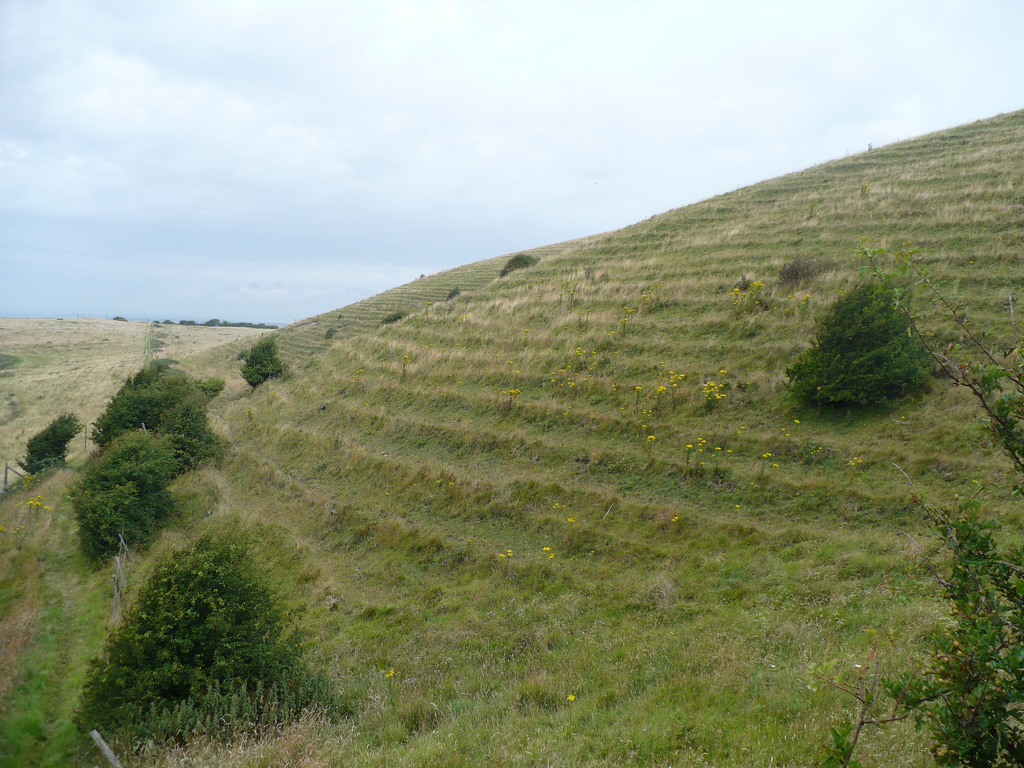
Source
The process is so slow that it is not easy to notice, but one can detect it from the way trees or fences on such slopes lean or bulge in the downslope direction.
If the slope is less gentle, and rain water saturates loose fine soil and turns it into the semi-liquid mud, such soil may simply flow down the slope slowly as mud flow.
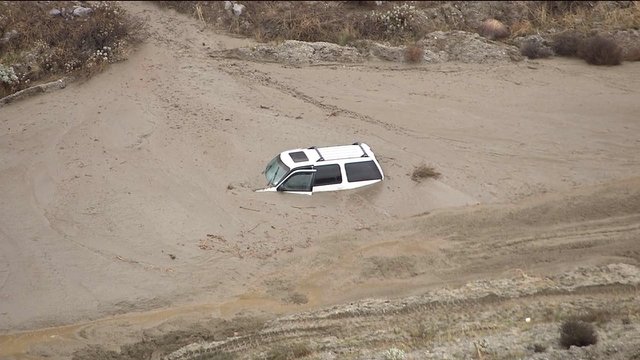
Source
As in the case of soil creep, both process and the resulting landform are called mud flow.The most common type and feature of mass movement is landslide. This happens on steep slopes like a road side cutting, or a cliff or at the valley side where a river has undercut its banks.

Source
When rain falls, the rain water is absorbed by the entire mass of loose soil, gravel and boulders perching on the slope. The surface of the firm rock beneath the mass is also lubricated by rain water seeping down. The mass becomes heavy and may suddenly slide down under gravity over the slippery, lubricated sloping surface. this leaves a slide scar with a concave slope up the hill from where the rock waste had slid down and a rubble below. Both the processes just described and the resulting land feature are referred to as landslide.Another type of mass movement similar to landslide is slumping. Both develop undersimilar physical environmental conditions. However, in slumping parallel stress faults develop, and the saturated rocks break off in large chunks which as they slide down over the slope perform a back rotational movement.
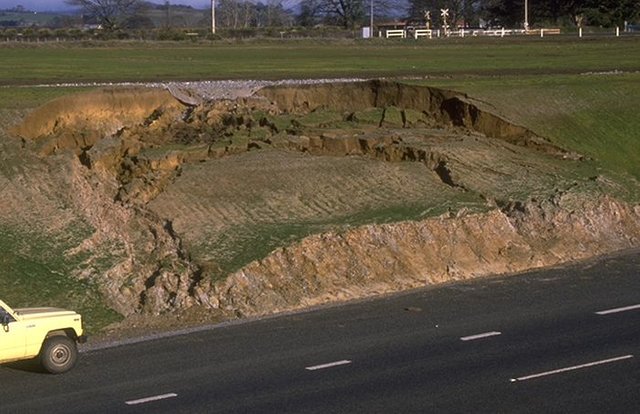
Source
This movement leaves a slump scar at the uphill side from where the rocks have slumped. Below the scar are slump blocks which retain the original land surface, but now sloping in reverse direction as a result of the back rotation.
The entire landscape just described is called a *slump.If only individual rocks tumble down a slopeafter they have been disintegrated, both the phenomenon and the feature are called rock fall.
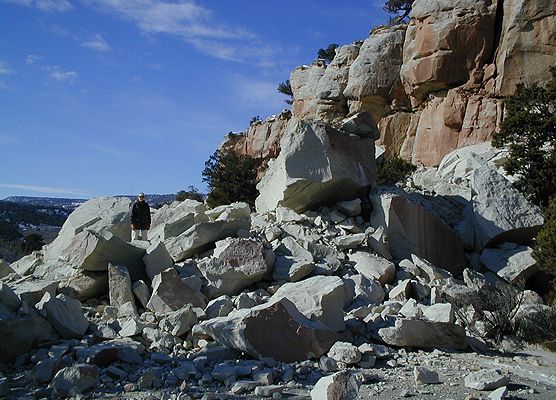
Source
The rocks sort themselves out freely, larger ones at the base, smaller ones higher up. The fallen rocks are collectively called talus or *screes.The sixth type of mass wasting found in the temperate region only.This is when rock materials brought down and deposited by huge ice sheets begin to slide down the frozen slippery ground beyond the ice margin. This process of mass movement is known as solifluction.
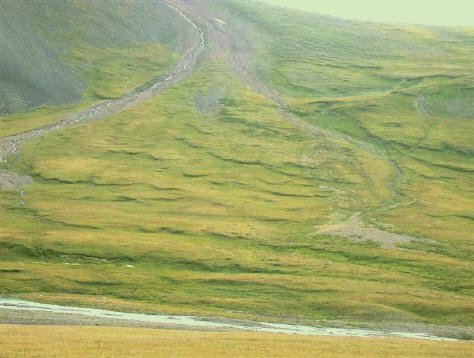
Source
Mass wasting just don't just happen, there are certain factors which promotes mass wasting. These include:
The nature of slope: gradual slope lead to soil creep or mud flow, while steeper slopes promote landslide, slumping and rock fall. Rock falls are therefore more common in mountainous region.
Climatic factors: rainfall promotes the whole process of mass wasting everywhere, without precipitation mass wasting do not occur.
Plant cover: lack of plant cover promotes mass wasting , whereas where vegetation exists, the roots of plants help to check the movement.
Rock structure and deposition: in areas of sedimentary rocks, a permeable rock on top of an impermeable one makes the area susceptible to landslide or slumping.
Tectonic action: tectonic actions like earthquake and vulcanicity shakes the earth, destabilises the rocks and may trigger off mass movement.
Geomorphic process: undercutting by rivers ( at the outside of meanders), and wave action along the coast destabilise the undercut rocks which eventually falls and waste.
Man and animals: road cutting, deforestation, overcropping or overgrazing a slope may set any of the processes of mass wasting in motion.
we can avoid the disastrous effects of mass movement by: planting vegetation on slopes, not building our house on slopes or at their bottom, discouraging settlement around earthquake or volcanic zones, and not overgrazing, overcropping or deforesting our lands. At road cutting, we should leave the side slopes stepped and reclining backwards.
Reference
http://imnh.isu.edu/digitalatlas/geo/basics/massmvnt.htm
http://www.physicalgeography.net/fundamentals/10x.html
https://www.tulane.edu/~sanelson/eens1110/massmovements.htm
https://en.wikipedia.org/wiki/Mass_wasting

You received a 80.0% upvote since you are a member of geopolis.
To read more about us and what we do, click here.
https://steemit.com/geopolis/@geopolis/geopolis-the-community-for-global-sciences-update-3
If you do not want us to upvote and comment on your posts concerning earth and earth sciences, please reply stop to this comment and we will no longer bother you with our love ❤️